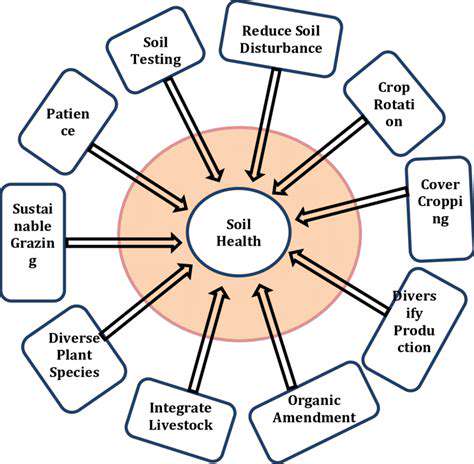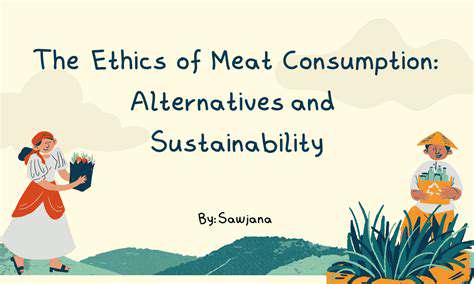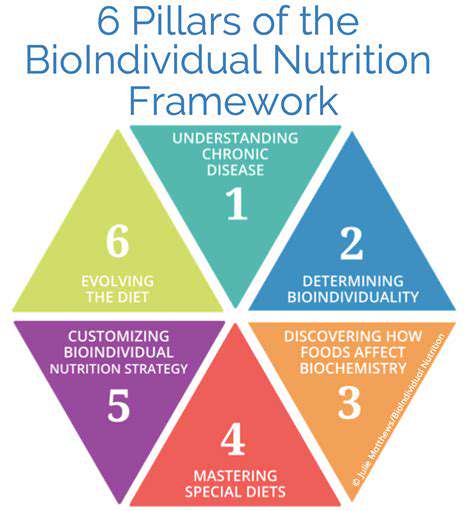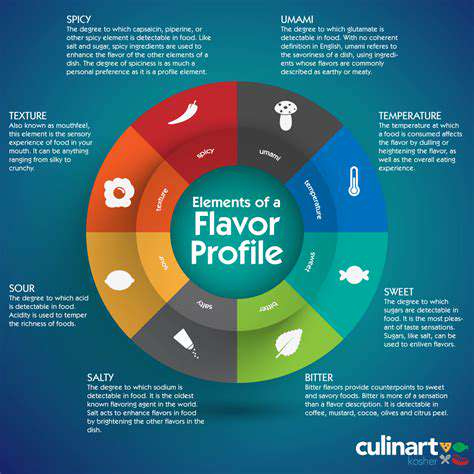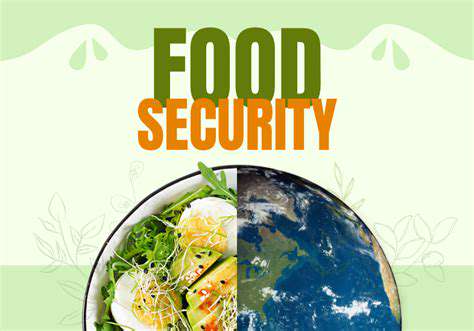Water Footprint of Different Foods
When we consider the environmental impact of our meals, water consumption often goes unnoticed. The total freshwater required to produce various food items, from field to fork, reveals surprising disparities. Animal-based products generally demand far more water than plant-based alternatives, with beef standing out as particularly resource-intensive. This hidden water cost stems from irrigation needs, processing requirements, and transportation logistics that many consumers never see.
Recognizing these differences empowers us to make choices that align with sustainable water management. Simple substitutions in our daily meals can collectively make a substantial difference in conserving this precious resource.
Agricultural Water Consumption
Farmland irrigation accounts for approximately 70% of global freshwater withdrawals, a staggering figure that underscores agriculture's central role in water resource management. Crop water needs fluctuate dramatically based on plant type and regional climate patterns. As climate change exacerbates drought conditions in many agricultural regions, the pressure on water systems intensifies, threatening both crop yields and water security.
Livestock Water Demands
The water requirements of meat production extend beyond what animals drink directly. The cultivation of feed crops like corn and soy represents the majority of water use in livestock systems. Producing just one pound of beef can consume over 1,800 gallons of water, making animal agriculture one of the most water-intensive sectors of food production. This reality presents significant opportunities for water conservation through dietary adjustments.
Processing and Transportation
Beyond the farm, food processing facilities use substantial water for cleaning, preparation, and packaging operations. The journey from processing plant to grocery store also carries a water cost through fuel production and transportation infrastructure. Streamlining these systems and shortening supply chains can yield important water savings while maintaining food quality and safety standards.
Impact on Water Availability
Regions producing water-intensive crops or livestock often face the greatest strain on local water supplies. Aquifer depletion in major agricultural areas demonstrates how current practices may be unsustainable long-term. These water challenges can create tension between agricultural needs, urban demands, and ecosystem requirements, highlighting the need for balanced water management strategies.
Consumer Choices and Water Conservation
Each shopping trip presents opportunities to support water-wise food production. Choosing seasonal, locally grown produce and reducing consumption of water-intensive products can significantly lower individual water footprints. Conscious consumers increasingly drive demand for sustainably produced foods, encouraging producers to adopt water-saving practices throughout the supply chain.
Sustainable Agriculture Practices
Innovative farming techniques are transforming water use in agriculture. Drip irrigation systems, soil moisture monitoring, and drought-resistant crop varieties all contribute to more efficient water utilization. These advancements demonstrate that productivity and conservation can coexist, offering pathways to maintain yields while reducing agriculture's water footprint.
Land Degradation and Deforestation: The Price of Expansion
Land Degradation: A Silent Crisis
Soil health deterioration affects nearly one-third of the world's arable land, with profound consequences for food production capacity. This gradual process often results from intensive farming methods, overgrazing, and improper land management. The loss of fertile topsoil occurs much faster than natural formation rates, creating a deficit that threatens future agricultural productivity.
Deforestation's Impact on Ecosystems
Forest clearance for agriculture eliminates critical carbon sinks and biodiversity hotspots. The Amazon rainforest, often called the lungs of the Earth, has lost approximately 17% of its tree cover in the last half-century. This destruction disrupts rainfall patterns, increases carbon emissions, and destroys irreplaceable habitats, creating ripple effects throughout global ecosystems.
Unsustainable Agricultural Practices
Modern monoculture farming, while efficient for specific crop production, often depletes soil nutrients and increases vulnerability to pests. The heavy reliance on chemical inputs can create dependency cycles while contaminating surrounding environments. Transitioning to diversified cropping systems and organic methods could help restore soil health over time.
The Role of Food Choices in Land Degradation
Dietary patterns directly influence land use pressures. The land required to produce plant-based foods is typically far less than that needed for equivalent animal-based calories. As global meat consumption rises, so does the strain on available agricultural land, often driving deforestation and ecosystem conversion.
Economic Costs of Land Degradation
The financial impacts of declining soil quality extend beyond farming communities. Reduced agricultural productivity can increase food prices, while water purification costs rise as soil erosion contaminates waterways. These economic burdens disproportionately affect developing nations where agriculture forms a larger share of the economy.
Connection to Food Security
As the global population approaches 10 billion, maintaining productive farmland becomes increasingly critical. Current degradation rates could reduce global food production by 12% within 25 years, potentially triggering widespread food insecurity. Addressing land management practices now could prevent severe shortages in coming decades.
Solutions and Mitigation Strategies
Successful land restoration requires coordinated efforts across multiple fronts. Agroforestry systems that combine crops with trees, conservation tillage methods, and organic soil amendments all show promise for reversing degradation. International initiatives like the Bonn Challenge aim to restore 350 million hectares of degraded land by 2030, demonstrating the scale of response needed.
A comprehensive security strategy extends beyond individual devices. Integrating smart devices with professional monitoring services creates a robust defense system capable of detecting and responding to threats in real time. Modern systems can differentiate between routine activity and potential threats, reducing false alarms while improving response to genuine emergencies.
The Energy Consumption of the Food System
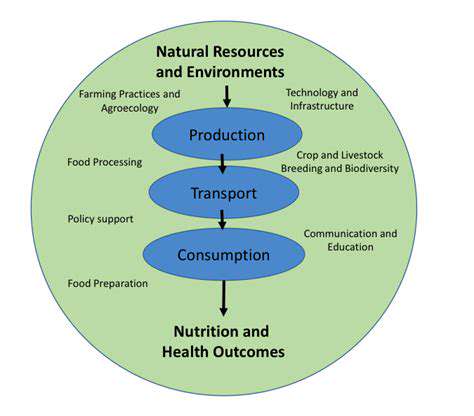
Factors Influencing Food Energy Consumption
The journey from farm to fork involves multiple energy-intensive stages that often go unnoticed. Production methods, processing requirements, and transportation distances collectively determine a food's energy footprint. Even food waste contributes significantly, as all energy invested in unconsumed food represents pure loss in the system.
Energy Consumption During Production
Modern agriculture relies heavily on fossil fuels for machinery operation, fertilizer production, and irrigation systems. The energy input for synthetic nitrogen fertilizer production alone accounts for nearly half of total agricultural energy use. Pasture-based livestock systems generally require less direct energy but occupy more land, presenting different sustainability trade-offs.
Transportation and Distribution
While food miles receive considerable attention, transportation typically represents a smaller portion of total energy use than production phases. However, air-freighted perishables and refrigerated shipments carry exceptionally high energy costs. Optimizing distribution networks and favoring seasonal produce can yield meaningful energy savings without compromising food availability.
Energy Consumption in Food Preparation
Home cooking methods significantly impact personal food energy footprints. Slow cookers and pressure cookers often prove more efficient than conventional ovens, while microwave cooking generally uses less energy than stovetop methods. Meal planning to minimize appliance use and proper maintenance of cooking equipment can reduce household food-related energy consumption by up to 30%.
Energy Efficiency and Sustainability
The food system's transition to renewable energy sources is underway but faces unique challenges. Solar-powered irrigation, biogas from agricultural waste, and electric farm equipment all show promise for reducing reliance on fossil fuels. Combining technological innovation with consumer education creates pathways to a more sustainable food-energy future that can meet growing demand without proportional increases in energy use.
